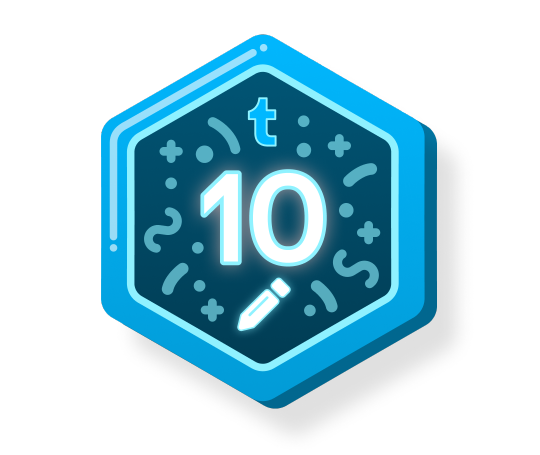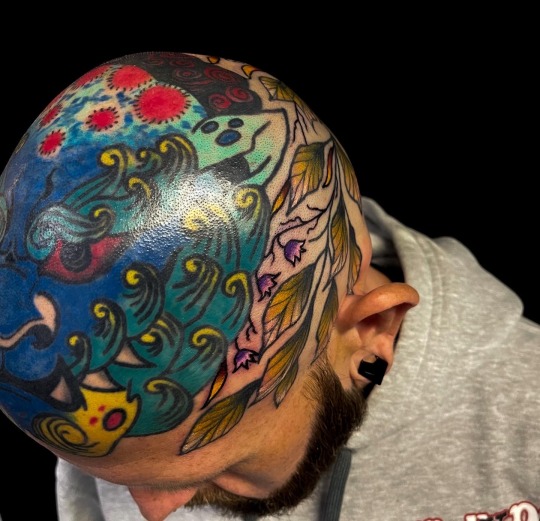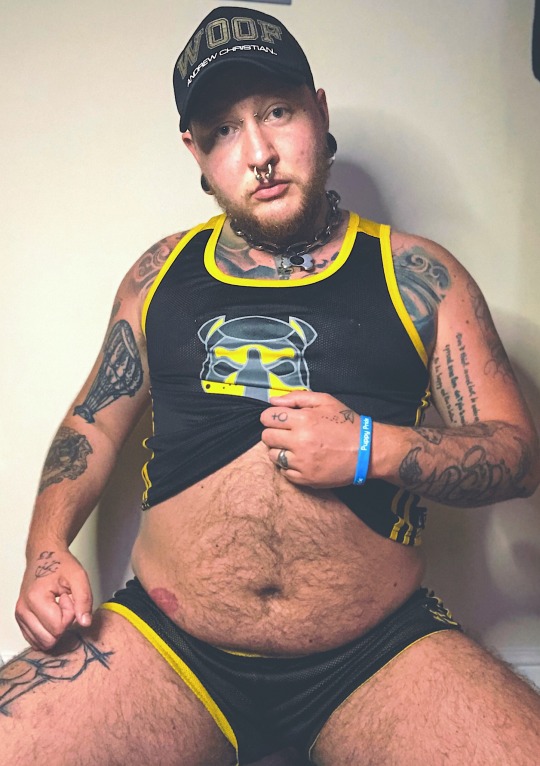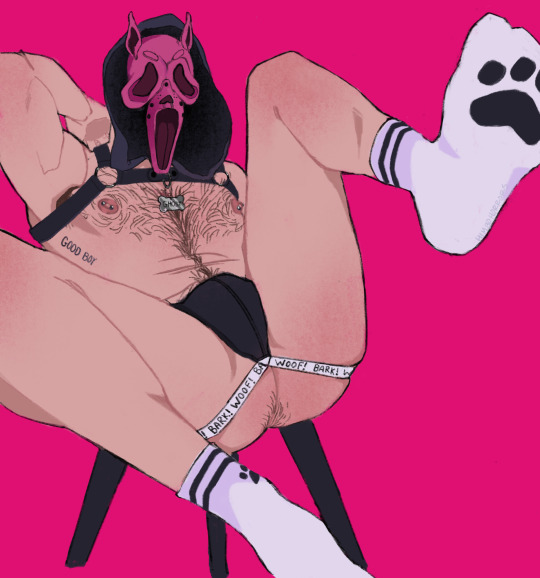37 Nullo Dad/Pussy Doula 🏳️🌈NSFW/18+ Pup 🐶Kinkster 😈 Community Builder |Fan site ➡️ justfor.fans/borgpupAsk Me Anything 🎤 ngl.link/borgpupDonate ➡️ ko-fi.com/borgpup Cashapp/Venmo $/@ borgpupbottomsurgery.notion.site
Don't wanna be here? Send us removal request.
Text

Was the first Pride a "riot"? Let's talk history.
The vibrant tapestry of Pride celebrations we witness today, filled with parades, rainbows, and expressions of joy, owes its existence to a pivotal moment in history: the Stonewall Uprising of 1969. This was not simply a parade that emerged out of thin air, but rather a hard-won celebration born from struggle and defiance. The Stonewall Uprising was a spontaneous combustion of pent-up anger and frustration—a rebellion against the systemic oppression, harassment, and discrimination faced daily by the LGBTQ+ community. For years, they had endured raids, abuse, and social marginalization.
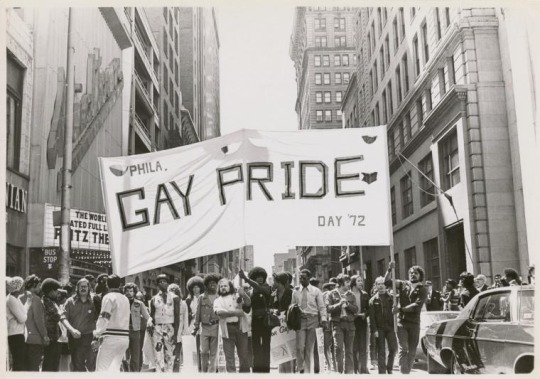
The historical record indicates that the term "riot" was deployed by urban police departments to justify their use of force.
Sound familiar?

Today, we are witnessing the Trump administration invoke the specter of “riots” in Los Angeles to justify the arbitrary deployment of state violence against U.S. citizens exercising their constitutional freedoms to speech and assembly against the illegitimate exercise of state power. We must distinguish between Americans exercising their rights to peaceful free assembly and actual street violence.
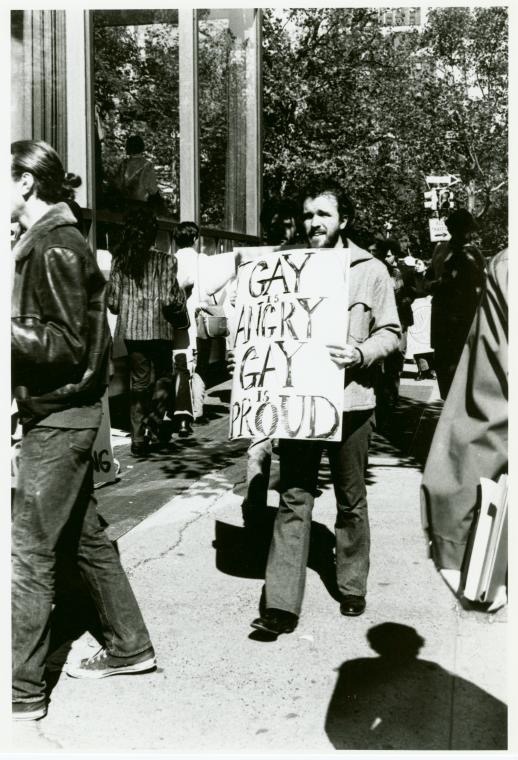
The Stonewall Uprising of 1969 stands as a monumental event in the LGBTQ+ rights movement, often mistakenly cited as the genesis of queer resistance. While it certainly wasn't the first instance of LGBTQ+ individuals fighting back against persecution, it undeniably served as a transformative catalyst. Stonewall marked a pivotal shift, igniting a fire that led to the emergence of more radical, intersectional, and multifaceted activist organizations. This crucial moment serves as a potent reminder of the often-overlooked contributions of those on the fringes of society, specifically emphasizing the indispensable roles that transgender women of color played in igniting and sustaining the flames of change. These individuals, facing compounded discrimination due to both their gender identity and race, were at the forefront of the resistance, demonstrating extraordinary courage and resilience. Their participation was not just incidental; they were the sparks that set off the explosion of activism, highlighting the critical intersection of various social justice struggles and underscoring the essential truth that change often originates from the margins, driven by those who have the most to gain and the least to lose.


The language we use matters! "Uprising" better captures the fight against systemic oppression, while "riot" was often used to dismiss and delegitimize the movement.The choice of words to describe the Stonewall events is critical. The term "riot" was and often still is employed to trivialize and undermine the movement for queer liberation, casting it as mindless violence rather than a legitimate reaction to injustice. This distinction is not merely semantic; it reflects differing interpretations of the historical events and reveals underlying biases about protests against authority.

Labeling Stonewall a "riot" plays into the hands of those who wish to erase our history. It echoes the language of oppression, a tool used to justify violence against us and silence our fight for liberation. To reclaim our story as an "uprising" or "rebellion" is to honor the courage of those who stood up against injustice and to refuse to let their voices be forgotten. "Uprising" highlights the organized, purposeful nature of the resistance and acknowledges the marginalized group's fight for their rights and dignity, reclaiming their narrative and empowering their story in the face of historical erasure.

Understanding this history helps us appreciate the journey of the LGBTQ+ rights movement and the significance of Pride today. Let's remember and honor those who fought for our rights!


#StonewallUprising#pridehistory#LGBTQRights#PrideMonth#PrideMonth2025#civilrights#RightToProtest#wordsmatter#queerhistory
0 notes
Text
The Collared Identity: History and Significance of Collaring in Queer Leather Culture 🏳️🌈⛓️

I. Introduction: Beyond the Aesthetic
The practice of collaring within queer leather culture is far more than a mere sartorial choice; it represents a deeply symbolic and multifaceted phenomenon, intrinsically woven into a rich tapestry of identity, community, and consensual power dynamics. This report undertakes a comprehensive examination of collaring, meticulously tracing its historical evolution, dissecting its diverse symbolic interpretations, and analyzing its evolving role in relationship structures, individual expression, and the broader framework of the queer leather community. By acknowledging its inherent complexity and consensual foundation, this analysis aims to provide a nuanced understanding of a practice that stands as a central pillar within a vital LGBTQ+ subculture.
II. Historical Trajectories: The Genesis of Collaring in Queer Leather Culture
The emergence of collaring as a significant practice is intrinsically linked to the broader development of the queer leather subculture, which solidified in the aftermath of World War II. Its origins are rooted in a complex interplay of social conditions, aesthetic appropriation, and the urgent need for community formation among marginalized individuals.
Emergence of Gay Leather Subculture Post-WWII (1940s-1950s)
The gay male leather culture began to emerge in the late 1940s, drawing heavily from the rugged aesthetic of post-World War II biker culture. A significant portion of this burgeoning community comprised queer servicemen and servicewomen returning from overseas conflicts, who subsequently congregated in major U.S. cities such as Los Angeles, New York City, Chicago, and San Francisco. This period was marked by intense societal oppression and criminalization of homosexuality, making open identification and community building exceptionally challenging. The adoption of the masculine aesthetic of leather jackets and pants, previously associated with motorcycle enthusiasts and other nonconformist groups, offered a powerful visual language for gay men. This was not merely a fashion trend; it was a deliberate, strategic act of identity formation and collective resistance against dominant cultural norms. The aesthetic symbolized a profound desire for freedom, nonconformity, and self-expression, providing a crucial avenue for finding and connecting with fellow queer individuals when overt displays of identity were dangerous. The hypermasculine presentation inherent in the leather look also served as a direct counterpoint to mainstream heterosexual culture's tendency to conflate gay male sexuality with femininity, thereby affirming and expressing "masc" and "butch" gay identities within the community. This visual defiance was crucial for survival and community cohesion in a hostile environment. The aesthetic was further popularized by iconic figures like Marlon Brando in "The Wild One," whose character's leather jacket, boots, and cap became staples. Similarly, artists such as Tom of Finland, through their suggestive drawings of well-endowed leather-clad men, contributed significantly to the spread of this "outlaw biker aesthetic" among gay men. This formative period also saw the development of "pre-leather" butch BDSM practices in New York City, which would later intertwine with and enrich the emerging leather scene.
Early Appearances and Increasing Visibility of Collars and Harnesses
While the leather harness became a visible element in early bar photographs from the mid-1970s, with a noticeable increase in frequency during the 1980s, eventually earning the title of "the gay uniform for special occasions" and becoming a clear symbol of BDSM culture , collars themselves were not initially a common sight in the nascent gay men's leather scene. In earlier times, one might occasionally observe an individual wearing a locked chain collar, which implicitly conveyed that the key was held by another, signifying a form of ownership. This suggests that while the conceptual foundation of a collar as a symbol of relationship dynamics was present, its widespread adoption and the diverse interpretations it holds today evolved gradually over time.
Distinction from Non-Consensual Historical Uses of Collars
It is critically important to differentiate the consensual practice of collaring within queer leather culture from historical uses of collars that signify non-consensual control, punishment, or forced conformity. For instance, leather collars were a prescribed part of British and Continental Marine uniforms from the 1750s until 1872. Initially, these stiff collars were believed to protect the jocular vein during battle, though later explanations suggested their purpose was to keep the head erect, prevent soldiers from falling asleep on guard duty, and even improve rifle aim. More starkly, heavy iron collars fitted with bells were employed as cruel and humiliating tools to deter the escape of enslaved men and women. The sound of the bells, the awkwardness of the scroll pieces, and the sheer weight of these collars served as a constant, inescapable deterrent to freedom. These historical examples represent forced subjugation, dehumanization, and the denial of agency. In profound contrast, the practice of collaring in queer leather culture fundamentally emphasizes a "consensual exchange of power," "trust, commitment," and "mutual agreement". This juxtaposition reveals a powerful act of radical reappropriation: the queer leather community has taken a symbol historically associated with forced control and completely transformed its meaning, imbuing it with notions of chosen intimacy, trust, and empowered self-expression. This redefinition turns a tool of oppression into a powerful emblem of consensual connection and liberation, highlighting the subculture's capacity for symbolic defiance and autonomy.
Intersections with Punk and Goth Subcultures
Dog collars and bondage collars have been integrated into punk and goth styles since at least the late 1970s. This trend was significantly influenced by Malcolm McLaren and Vivienne Westwood's SEX clothing store, which famously sold fetish wear as fashion, effectively introducing elements of BDSM into alternative fashion. While some individuals wore these items purely for an edgy aesthetic or as a statement of counter-culture, many were aware of their kinky origins. This aesthetic crossover had a subtle yet significant impact. It broadened the public visibility of collar imagery beyond explicit leather spaces, introducing elements of kink and BDSM into a wider counter-cultural fashion lexicon. This increased visual familiarity, even if initially detached from its deeper meanings, could have inadvertently contributed to a gradual normalization or desensitization to such symbols, potentially making the visual language of collars more recognizable and less shocking to broader audiences over time. For some, this exposure may have even served as an entry point or aesthetic precursor to later exploration of the leather scene itself.
The Role of Archives and Museums in Preserving History
The Leather Archives & Museum (LA&M) in Chicago, founded in 1991 by Chuck Renslow and Tony DeBlase, plays a vital role in preserving the history and culture of the leather, kink, BDSM, and fetish communities. Established at the height of the AIDS crisis, its mission was to prevent the loss or intentional suppression of this history, which was frequently discarded by families unaware or ashamed of their loved ones' leather and fetish legacies. LA&M's extensive collections include organizational records from leather and fetish organizations worldwide, as well as personal papers, photographs, and numerous artifacts such as vests, patches, and pins from LGBTQ motorcycle and leather clubs. The museum also houses a significant collection of queer erotic art, making it an indispensable resource for understanding the historical context and evolution of practices like collaring within this subculture.
III. The Multifaceted Significance of Collaring
Collaring within queer leather culture carries profound and varied meanings, extending across power dynamics, personal identity, relationship commitment, and community solidarity. It functions as a complex symbol that communicates on multiple levels.
A. Power Dynamics and Consensual Exchange
The collar is widely recognized as the "ultimate symbol of power exchange" within the BDSM and kink community. When worn around the neck, it explicitly signifies the submissive role or the exploration of submissive desires. While terms like "ownership" are frequently used in descriptions of collaring (e.g., "you have someone you own," "a bottom wearing a collar is owned by the Top that owns the collar") , the accompanying explanations consistently reframe this concept. It is not about literal possession or subjugation, but rather a "consensual exchange of power" built on "trust, commitment, and devoted loyalty". This mutual agreement binds both partners together in a consensual power dynamic. For the collared individual, this dynamic often provides profound psychological security, manifesting as "comfort" , a feeling of "safety" , and a "constant reminder of your partners hand on your neck" or even a "constant hug". The Dominant, in turn, bears significant "responsibility and care" for their submissive. This reinterpretation highlights that "ownership" in this context is a chosen, intimate framework that provides psychological security, a structured space for vulnerability, and a profound sense of belonging, rather than an oppressive claim. It underscores the agency of the submissive in actively choosing this dynamic and deriving emotional benefits from it. The decision to collar is always mutual and consensual, requiring open communication and respect for boundaries and comfort levels from both parties.
B. Identity and Self-Expression
Collaring serves as a profound expression of personal and subcultural identity, allowing individuals to convey their personality, aesthetic preferences, and affiliation within the leather community. Beyond its visual statement, wearing a collar can have a significant psychological impact. It can be "comforting" , make one "feel safe" , or act as a "constant reminder of your partners hand on your neck". For some, it facilitates a "personality switch," enabling them to transition from their everyday persona into a private submissive one. The act of wearing a collar is an embodied experience rooted in psychology and sensation, reminding the wearer of human fragility, connection, commitment, and the courage required to present one's authentic self. It embodies non-conformity and stands as a powerful symbol of queer liberation.
C. Commitment and Relationship Formalization
Collaring is a deeply meaningful act, frequently compared to mainstream engagement or wedding ceremonies, marking a significant milestone in a relationship. It signifies a mutual decision to embark on a BDSM journey together or to deepen an existing connection. In the "Old Guard Leather community," collaring traditionally progresses through distinct stages, each representing a deepening level of commitment.
This structured progression provides a clear, formalized understanding of commitment within this traditional context, emphasizing the profound relational depth and seriousness attributed to collaring within this subculture.
The rise of "day collars" and "self-collaring" demonstrates a notable evolution in collaring practices. "Day collars" are subtle pieces of jewelry—such as a necklace, bracelet, or anklet—designed for everyday wear, allowing for discreet signaling of a 24/7 commitment without drawing undue attention. This development reflects a desire to integrate the symbolism of collaring into daily life beyond explicit play sessions, acknowledging the continuous nature of the bond. The emergence of "self-collaring" and partners wearing matching collars not necessarily dominant/submissive in nature further illustrates a shift towards self-love, personal exploration, and diverse forms of partnership acknowledgment. This evolution indicates a broader trend towards personalization and fluidity in how these symbols are utilized, reflecting the dynamism of queer relationships and the community's capacity to adapt its traditions to accommodate varied structures and individual expressions of identity.
D. Community Building and Social Signaling
Collars serve as a vital visual language for communication and identification within the queer leather community, enabling individuals to signal their interests, desires, and affiliation. This visual communication facilitates "queer reading," a specialized skill developed by queer people to derive meaning from the world that others cannot, often making explicit verbalization of queer desire unnecessary. This non-verbal communication has been crucial for the survival of queer individuals throughout history, providing a layer of safety and discretion in potentially hostile environments. The use of collars fosters connection, shared experience, and a strong sense of belonging among members, acting as a visual handshake that signals "I am one of you". This allows a disempowered group (leathermen) within an already minoritized community (the broader gay community) to maintain and strengthen their identity, functioning as a symbolic form of resistance against cultural hegemony. Specific social protocols further exemplify the collar's function in establishing clear social boundaries and respect within the community. For instance, it is understood that "a bottom wearing a collar is owned by the Top that owns the collar, other Tops are not to engage a collared bottom in conversation, but other bottoms may do so". This demonstrates that collars are not just personal symbols but also highly effective social tools that facilitate interaction, establish clear boundaries, and reinforce community norms, particularly vital for a subculture that has historically operated under societal scrutiny and needed discreet ways to identify and protect its members.
IV. Types, Materials, and Evolution of Collaring Practices
The physical manifestation of collars in queer leather culture is as diverse as their symbolic meanings, reflecting individual preferences, specific dynamics, and the ongoing evolution of the practice.
Variety of Types and Materials
Collars come in a myriad of designs and materials, each carrying its own symbolism and practicality. Common materials include: - Leather: Considered classics, leather collars are known for their durability and versatility. They symbolize a connection between the earthly and the erotic, are low maintenance, and generally non-irritating to the skin. - Metal: Metal collars represent strength and control, often featuring intricate designs. "Infinity collars" are a notable type, typically ring-shaped and made of stainless steel or titanium, designed to be literally bolted on for full-time wear, signifying an unbreakable, continuous bond. - Fabric and Rubber: Fabric collars are soft, comfortable, and highly customizable, allowing for personal touches through patterns, colors, and embroidery, serving as a way to express individuality. Rubber collars, though less common, offer a distinct tactile experience and symbolize flexibility and adaptability within the BDSM dynamic.
Beyond material, collar designs and forms vary widely: - O-Ring Collars: A simple yet elegant ring, often symbolizing the infinite nature of the relationship. Ring of O: Inspired by the novel "Story of O," this style incorporates a ring or loop, frequently signifying ownership and a deeper commitment. - Locking Collars: Fitted with a lock, these collars highlight exclusivity and commitment, with the act of locking and unlocking symbolizing a profound and unbreakable connection. - Pendant Collars: These incorporate a pendant or charm, allowing for a more personalized touch where the pendant can hold significant meaning unique to the couple's bond. - Alternative Forms: The meaning of collaring can transcend the physical form worn around the neck. Individuals may use bracelets, waist chains, anklets, or even regular necklaces as symbolic collars, particularly when a neck collar might not be appropriate due to job requirements or the need for discretion. Even common chokers worn by high school students can carry a subtle, subcultural resonance.
The extensive variety in collar types, materials, and alternative forms is not merely aesthetic; it represents a pragmatic adaptation. The development of "day collars" for "discreet signaling" and the use of bracelets, anklets, or even regular necklaces to convey the same meaning, particularly due to "job requirements," demonstrates a remarkable ingenuity. This diversification illustrates the community's capacity to adapt the core symbolic meaning of collaring to varying levels of discretion, comfort, and permanence. It allows individuals to integrate this significant symbol into their daily lives and public personas while respecting social contexts, showcasing a mature subculture's ability to evolve its practices to meet diverse individual needs and practical considerations.
Evolution of Meanings and Practices
The meanings attributed to collars have significantly changed and become more fluid over time, adapting to suit individual erotic or identity needs. Historically, locked chain collars were the primary visual, implying clear ownership. Today, the interpretations are far broader and more nuanced, encompassing a wide spectrum of relationship dynamics and personal expressions. Contemporary uses include partners wearing matching collars as a symbol of partnership, not necessarily dominant/submissive in nature; individuals wearing collars they put on themselves to indicate a submissive nature without external ownership (self-collaring); pup collars, with or without locks, indicating pup status without a direct power dynamic; collars with open locks, signaling openness to someone taking control; chain collars worn simply for a masculine look, telegraphing an interest in edgier sex or kink; leather thongs tied in a knot as a "trial dating" collar; and collars symbolizing "boy status" without ownership, or D/s relationships without explicit ownership, or explicit Master/slave relationships indicating ownership.
This fluidity has generated some discussion and even controversy among certain members of the community, particularly "kinksters who feel that collars are sacred and their meanings more fixed". However, there is also a widespread acceptance that "change is the norm" and that symbols must evolve to meet people's needs. Day collars, in particular, exemplify this evolution, having "transcended their origins in the BDSM community and are now embraced by various relationship dynamics," even serving as an alternative to traditional engagement jewelry in some cases. The explicit mention of this internal discussion reveals a fundamental tension inherent in any living subculture—a dynamic interplay between honoring tradition and embracing adaptation. This is not a sign of breakdown but rather a healthy, ongoing process of negotiation and re-definition of meaning. It highlights the dynamism of the queer leather community, demonstrating its capacity to honor its historical roots while simultaneously adapting its symbols and practices to reflect evolving individual identities, relationship structures, and broader societal contexts. This internal dialogue ensures the subculture remains relevant and responsive to its members' needs rather than becoming stagnant.
V. Conclusion: A Dynamic and Enduring Symbol of Queer Resilience
The practice of collaring in queer leather culture stands as a powerful testament to the subculture's enduring resilience, profound creativity, and remarkable capacity for self-definition. Its origins in the post-World War II era, drawing from biker aesthetics and early BDSM practices, were fundamentally driven by the urgent need for identity formation and community building among marginalized queer individuals. This historical context underscores that the adoption of the leather aesthetic, including elements like collars, was a strategic and defiant act against societal oppression.
Collaring today stands in stark contrast to historical non-consensual uses of collars, representing a radical reappropriation of power dynamics into a framework of mutual trust, consensual exchange, and profound commitment. This transformation from a symbol of forced subjugation to one of chosen intimacy highlights the subculture's ability to redefine meaning and assert autonomy.
As a multifaceted emblem, collaring profoundly impacts identity and self-expression, offering psychological comfort, a sense of safety, and a means for individuals to embody their authentic selves within a supportive community. It formalizes relationships through a progression of deepening commitment, from initial consideration to lifelong bonds. The evolution of collaring to include discreet "day collars" and the empowering practice of self-collaring reflects the community's adaptability to modern life and diverse relationship structures.
Furthermore, collars function as a vital form of non-verbal communication, facilitating social signaling and community cohesion. They enable "queer reading," a crucial skill for discreet identification and protection within a historically marginalized group. The ongoing diversification of collar types and the fluid evolution of their meanings underscore the subculture's dynamism, demonstrating its ability to adapt to changing individual needs and broader societal shifts while steadfastly maintaining its core values of consent, respect, and deep connection. Ultimately, collaring remains a powerful and enduring symbol of queer liberation, community, and the profound human need for authentic connection and self-expression.
#queerleather#LeatherCulture#collaring#bdsm#kink#lgbtqhistory#QueerHistory#subculture#consent#PowerExchange#identity#community#queeridentity#lgbtqia#gayleather#fetish#queerliberation#symbolism#relationshipgoals#daycollars#selfcollaring#leatherarchives#QueerStudies#queerart#kinkcommunity
0 notes
Text
The Unstoppable Force: A Queer Autistic Child's Unmitigated Curiosity 🌈✨

There is no force of nature more powerful than a queer autistic child’s unmitigated curiosity. It is a relentless, beautiful engine of discovery, a quiet rebellion against the ordinary, and, for many of us, the very compass that guides us to our authentic selves. This essay is a testament to that force, a journey through a childhood defined by an insatiable hunger for knowledge in a world often resistant to its pursuit.

I’ve always been a bit precocious. My first memory, vivid and tactile, wasn't of a lullaby or a parent's face, but of a sensory landscape. As a baby in my parents’ duplex in Milwaukee, I recall crawling upstairs to my great-grandmother’s unit. To this day, I still have photographic recollection of every color and smell from that room – the seaweed-colored shag carpet, the faint, comforting scent of old lady perfume, the way the light filtered through the lace curtains. It was a world waiting to be cataloged, understood, and absorbed, even before I had the words for it.

This innate drive for understanding manifested early and dramatically. At the tender age of three, I taught myself how to read, long before entering kindergarten. By four, I was devouring books at a 4th-grade level. The local elementary school, designed for a more linear progression of learning, didn’t know what to do with me. I was bored, restless, and deeply resented being reprimanded for doing homework ahead of the rest of the class. The structured environment, the expectation of conformity, and the stifling of my intellectual pace felt like a cage. After first grade, my mother, recognizing the mismatch, made the unconventional decision to homeschool me – a rarity in the early 1990s, long before such arrangements became common.

Then, as now, starkly different priorities motivated my parents and me. Quite simply, my parents sought to exert total, unquestioning authoritarian control over every single aspect of my life. Their philosophy, as I understood it, was that children under the age of 18 were essentially owned livestock, subjected to unquestionable parental dominion in all places and at all times. This belief system clashed fundamentally with my burgeoning autonomy and my inherent need to explore, question, and understand the world on my own terms. My curiosity wasn't just a trait; it was a fundamental aspect of my being, and it was in direct opposition to the rigid boundaries they sought to impose.

Their authoritarian control wasn't just about rules; it was built on a foundation of dogma, a set of outright lies repeated with such vigorous intensity as to stifle questions or dissent. I heard pronouncements like, "The Earth is only 6,500 years old," or "The United States was founded as a white Judeo-Christian nation," and even the seemingly benign, "God loves you," felt like a coercive assertion when presented as the only truth. Put plainly, they asserted one single infallible true correct path to living a full, happy human life, leaving no room for my inherent need to question and explore.

Kids today might think of their phones or iPads as their primary source of truth and knowledge about the world. In the early 1990s, however, the landscape of information was vastly different. The only "cell phones" were bulky "car phones," and the internet was a nascent, inaccessible concept for most households. Back then, people still knew how to memorize phone numbers, and you could express a satisfying burst of frustration by rage-hanging the phone, slamming it into the receiver with the gumption of a boxer – there was virtually no danger of breaking it. Information was hard-won, often requiring trips to the library, poring over encyclopedias, or engaging in conversations with those who held knowledge. For a child whose primary drive was to learn, this presented both a challenge and an opportunity to develop resourcefulness.

This was also the era of the "Satanic Panic," a period fueled by unsubstantiated claims of widespread Satanic ritual abuse of children. Fear permeated the air, and children were raised with pervasive fears of "stranger danger," a constant vigilance against unseen threats. This cultural backdrop of paranoia and misinformation created an environment where questioning, critical thinking, and independent exploration were often viewed with suspicion. For a child whose brain was wired to seek patterns, verify facts, and dissect narratives, this era was a bewildering contradiction. How could the world be so full of fear based on so little evidence? This early exposure to widespread societal delusion only sharpened my inherent skepticism and deepened my commitment to seeking verifiable truth, a trait that would prove invaluable in understanding myself.

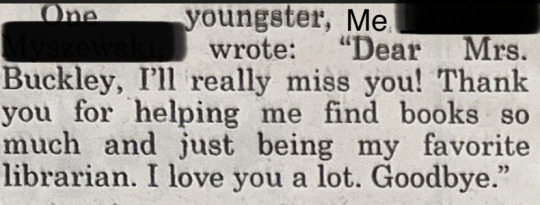
In a world that seemed to thrive on fear and unverified claims, I found my antidote, my sanctuary of facts and reason, in the most unlikely of places: the public library in my hometown. It was my intellectual oasis, a sanctuary where the rigid boundaries of home dissolved. No one could stop me there. Sussex was a small town, and I lived closely enough to walk there every day, losing myself among the stacks. I voraciously consumed non-fiction volumes on every subject imaginable – from astronomy and biology to history and philosophy. Each book was a window into a world of verifiable facts, a stark contrast to the unquestioning dogma I encountered elsewhere. It was within those quiet aisles that I began to forge my own fully-grounded understanding of the basic facts of life. Scientific empiricism, the rigorous pursuit of truth through observation and evidence, became my unwavering lodestar, a method for sifting and winnowing through the noise to find what was real.

My unmitigated curiosity, far from being a mere intellectual pursuit, became my primary tool for navigating a world that often felt alien. It was the lens through which I began to understand why I felt different, why certain sensory inputs were overwhelming, and why social cues often felt like a foreign language. This relentless questioning led me to discover the concept of neurodivergence, and specifically, autism. It wasn't a diagnosis given to me, but a self-discovery, a framework that finally made sense of my internal world and experiences. This knowledge wasn't just empowering; it was liberating, transforming what had been perceived as "flaws" into fundamental aspects of my operating system.
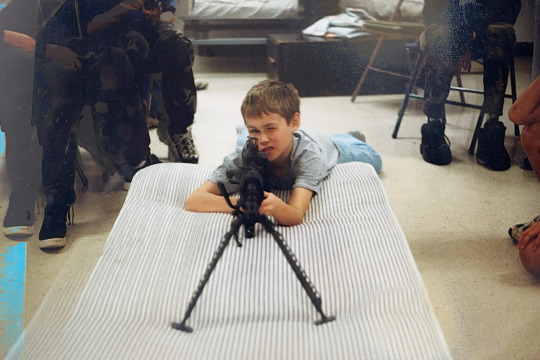
Similarly, my curiosity extended to the realm of human connection and identity. In a world that presented a narrow definition of love and attraction, my unmitigated curiosity compelled me to explore the vast spectrum of human experience. It was through reading, observing, and questioning – often in secret, given the restrictive environment – that I began to understand and embrace my queer identity. This wasn't a choice; it was a recognition, a deep knowing that resonated with the truest parts of myself. The same internal engine that sought to understand the mechanics of the universe also sought to understand the mechanics of my own heart and desires.

This journey of self-discovery, fueled by an unstoppable curiosity in the face of control and misinformation, is the very essence of Pride. Pride is not just a celebration of identity; it is a profound affirmation of the right to exist authentically, to love freely, and to be seen fully. For queer autistic individuals, this journey often involves an intense internal exploration, a meticulous piecing together of self in a world not always designed for us. Our unmitigated curiosity becomes our greatest ally, allowing us to ask the questions, find the answers, and build the understanding that leads to self-acceptance and, ultimately, to joy.

The queer autistic child, with their boundless curiosity, embodies a powerful truth: that genuine understanding, both of the world and of oneself, is the most potent form of liberation. It is a force that dismantles fear, challenges dogma, and illuminates the path to authenticity. As we celebrate Pride, let us not only honor the vibrant tapestry of LGBTQ+ identities but also recognize the quiet, persistent power of every curious mind, especially those that dare to explore the depths of their own unique being, illuminating the world with their unwavering light.
#Pride#Nerd#Bookworm#QueerAutistic#NeurodivergentPride#AutismAcceptance#PrideMonth#LGBTQIA#UnmitigatedCuriosity#SelfDiscovery#AuthenticSelf#TruthSeeker#Empowerment#QueerStories#AutisticVoices#Inclusion#Diversity#LoveIsLove#Pride2025#Neurodiversity#HumanRights#BeyondTheBinary#QueerJoy#AutisticJoy#ChildhoodMemories#Homeschooling#SatanicPanic#LibraryLove#Empiricism#PersonalJourney
0 notes
Text
Why Pride Matters So Much To Me 🏳️🌈
June 2025 marks a monumental occasion: my first Pride as a post-op nullo, a non-binary trans person finally at home in their own skin. This isn't just a celebration; it's a defiant roar against decades of trauma and a testament to the enduring power of self-acceptance and creating chosen family.
My childhood in Southeast Wisconsin was a crucible of conservative evangelical dogma, a theocratic right-wing bubble that suffocated any sense of belonging. From my earliest memories, I felt alien, a queer kid in a world determined to erase me. The only escape I craved was literal – I started studying German at ten, dreaming of a life anywhere but there.
The collision course with my parents was inevitable. In January 2005, at 17, I came out to them as gay while a freshman at UW-Madison. Their response was catastrophic. Financially cut off, I was told my life would be "miserable, incomplete, unhappy," inevitably ending in "death by AIDS." This wasn't concern; it was a hateful prophecy, a weaponized fear designed to break me. This insidious rhetoric, designed to condemn and isolate, is etched into my memory.

The same hateful voices that attacked me as a queer kid are now orchestrating a grotesque moral panic around gender-affirming care. These fascist morons aren't concerned with anyone's well-being; they're deploying a classic strategy of distraction and division. Their failures of leadership are masked by manufacturing outrage, pitting segment against segment, all to maintain their decaying grip on power. This isn't about protecting children or upholding values; it's about control, about demonizing the vulnerable to consolidate their own crumbling authority.

Let me be unequivocally clear: there are no "gay rights" without trans rights. The fight is indivisible. To surrender on trans rights is to concede ground on all queer liberation. We witnessed this in the fight for marriage equality. When I married my first husband in 2011 in New York City, Wisconsin still treated us as second-class citizens. We paid an extra $250 for a court-ordered name change, endured extensive legal planning just to gain a shred of recognition for our union. The battle culminated in Obergefell v. Hodges, and suddenly, "gay marriage" was no longer a controversial social issue. This rapid shift illustrates precisely how easily societal acceptance can be won when we stand united.
Pride, therefore, is not a quaint parade; it's a stark reminder that the struggle for queer rights is ceaseless. It’s a call to arms against those who seek to roll back our progress, to deny us our dignity and our very existence. In this fight, we must stand in full, unwavering solidarity with every single member of our LGBT family. We are bound not by blood, but by shared struggle, by resilience, and by an unbreakable commitment to a future where all of us can thrive.

You can’t pick your parents, but you can choose your Daddy – and in the queer community, we choose to lift each other up, to protect one another, and to fight for the liberation of all. For me, Pride is a sacred space, a chance to reach back to that scared, lonely younger self and affirm, with every fiber of my being: I belong here. No matter what the bigots and their hateful pronouncements have to say, I am here, I am real, and I am unapologetically myself.

#Pride2025#TransIsBeautiful#QueerJoy#LGBTQRights#TransRightsAreHumanRights#GenderAffirmingCare#BrooklynBridge#NYC#AuthenticSelf#FightForEquality#Nullo#NonBinary#ReligiousTrauma#QueerIdentity#SelfAcceptance#NoHate#EqualityForAll#LoveWins#Visibility#Tattoos#GayPup#PupPlay#Pride#PrideMonth
0 notes
Text
#DailyBaphirmation
Pride is how you let the bastards know they can’t win. 🏳️🌈🤘🔥🧱
3 notes
·
View notes
Text
The time has come! #HappyPride ! 🌈💖🏳️🌈
#Pride2025 #pridemonth #happypride #rainbowseverywhere #GayPride #Equality #LoveWins #StonewallRiots #LGBTQHistory #Transgender #HumanRights #HappyPride #GayLiberation #Queer #LGBTQCommunity #History #NYCQueerHistory #QueerActivism #VintageLGBTQ #PrideMonth #MadeWithAI
0 notes
Text
Happy Pride Month! 🌈

June is #PrideMonth! We honor the legacy of the Stonewall Uprising (1969) when LGBTQ+ people courageously fought back against police harassment in New York City.

The first Pride marches, held on June 28, 1970, in NYC, LA, and Chicago, began this powerful tradition of remembrance, celebration, and continued protest for queer rights.

Today, remembering this history is more vital than ever. As we face renewed challenges to LGBTQ+ rights, including restrictions on gender-affirming care, attacks on drag performances, and attempts to limit LGBTQ+ content in schools, the spirit of Stonewall reminds us that progress requires persistence and courage.

The activists who came before us didn't just hope for change – they demanded it, organized for it, and fought for it. Their legacy teaches us that rights aren't simply granted; they're won through collective action, visibility, and unwavering determination in the face of stubborn opposition.
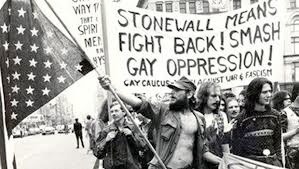
Every single day, this entire month, I will be sharing stories of queer joy and liberation from our oppressors. Fighting together in #solidarity, we will overcome today’s struggles for justice too.


Photos source: The New York Public Library, Manuscripts and Archives Division, NYPL Digital Collections.
#QueerHistory#StonewallAnniversary#LGBTQPride#Pride#LGBTQ#LoveIsLove#GayPride#Equality#LoveWins#StonewallRiots#LGBTQHistory#Transgender#HumanRights#HappyPride#Pride2025#GayLiberation#Queer#LGBTQCommunity#History#NYCQueerHistory#QueerActivism#VintageLGBTQ#PrideMonth
10 notes
·
View notes
Text
'Twas the night before Pride, when all through the house,
Not a flag was unfurled, not even a spouse.
The crop tops were hung by the mirror with care,
In hopes that Saint Daddy soon would be there.
The gays nestled snug in their skincare routines,
While visions of hot girl summer danced in their dreams.
And I in my silk robe, fresh from face mask prep,
Had just binged *Heartstopper* and started to nap.
When out on the street there arose such a slay,
I sprang from my bed to see who was gay.
Away to the window I flew with a snap,
Threw open the blinds—"Bestie, what's that?"
The moon on the breast of fresh Pride Month vibes
Gave lustre to rainbows and all of our tribes.
When what to my wondering eyes did appear,
But Charli XCX and eight drag queen deer!
With a little old driver so cunty and quick,
I knew in a moment—it's Pride Santa, bitch!
More rapid than TikTok trends his dancers they came,
And they served, and they slayed, as he called them by name:
"Now Katya! Now Trixie! Now Bob and Bianca!
On Jinx! On Alaska! Sasha and Priyanka!
To the top of the float! Werk the crowd, give your all!
Now sashay! Shantay! Shantay you all!"
He was dressed head to toe in designer Pride merch,
His outfit? No notes—a religious experience, church.
A bag full of poppers and glitter he carried,
Plus flags for the kids who just got gaymarried.
His eyes—how they sparkled! His highlight, so bright!
His contour was snatched, his wig felt so right!
He threw not a word, just went straight to his werk,
Filled every thirst trap, then turned with a smirk.
Then laying his finger aside of his nose,
Up the chimney he went—how? Nobody knows.
He sprang to his float, gave his team a loud "Yass!"
And away they all flew (with that dump truck ass).
But I heard him exclaim, ere he drove out of sight—
"Happy Pride to you sluts, now go touch some grass!"
#Pride #PrideMonth #LGBTQ #Gay #Queer #RuPaulsDragRace #DragRace #CharlieXCX #Heartstopper #Slay #Bestie #Werk #Poetry #PoetryReel #Reel #Viral #QueerCommunity #PrideCelebration #QueerJoy #LoveIsLove
1 note
·
View note
Text
Hey Tumblr,
It’s been a while. I’ve missed you. I basically got kicked off of this platform back when pornography got restricted. I sought out and took refuge in the community on this site, to meet people who are the same kind of queer as me. Facebook and Instagram are just ad platforms; not social at all. I look forward to connecting and rebuilding my presence here again.

#gay pup#tattoos#gayinked#chest tattoo#bodysuit#heavyblackwork#blackworkcult#leather#kink#queer#enby#dataanalyat#nerdcore#MBA#Chef#Pastry Chef#collared#owned#goodboy#gay leather
3 notes
·
View notes

